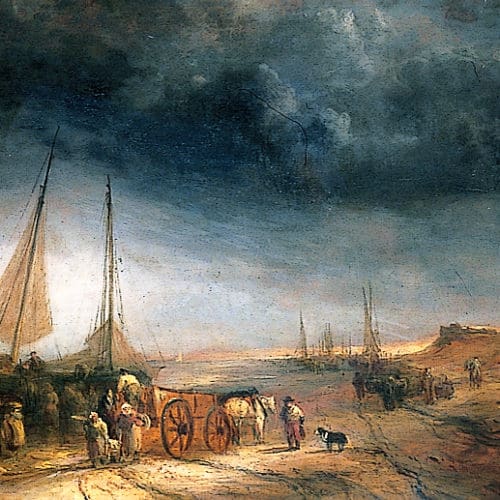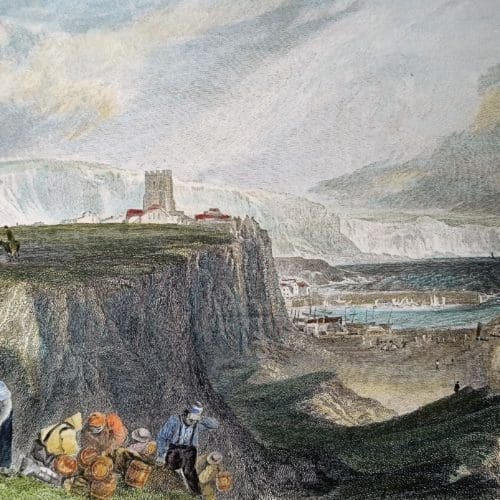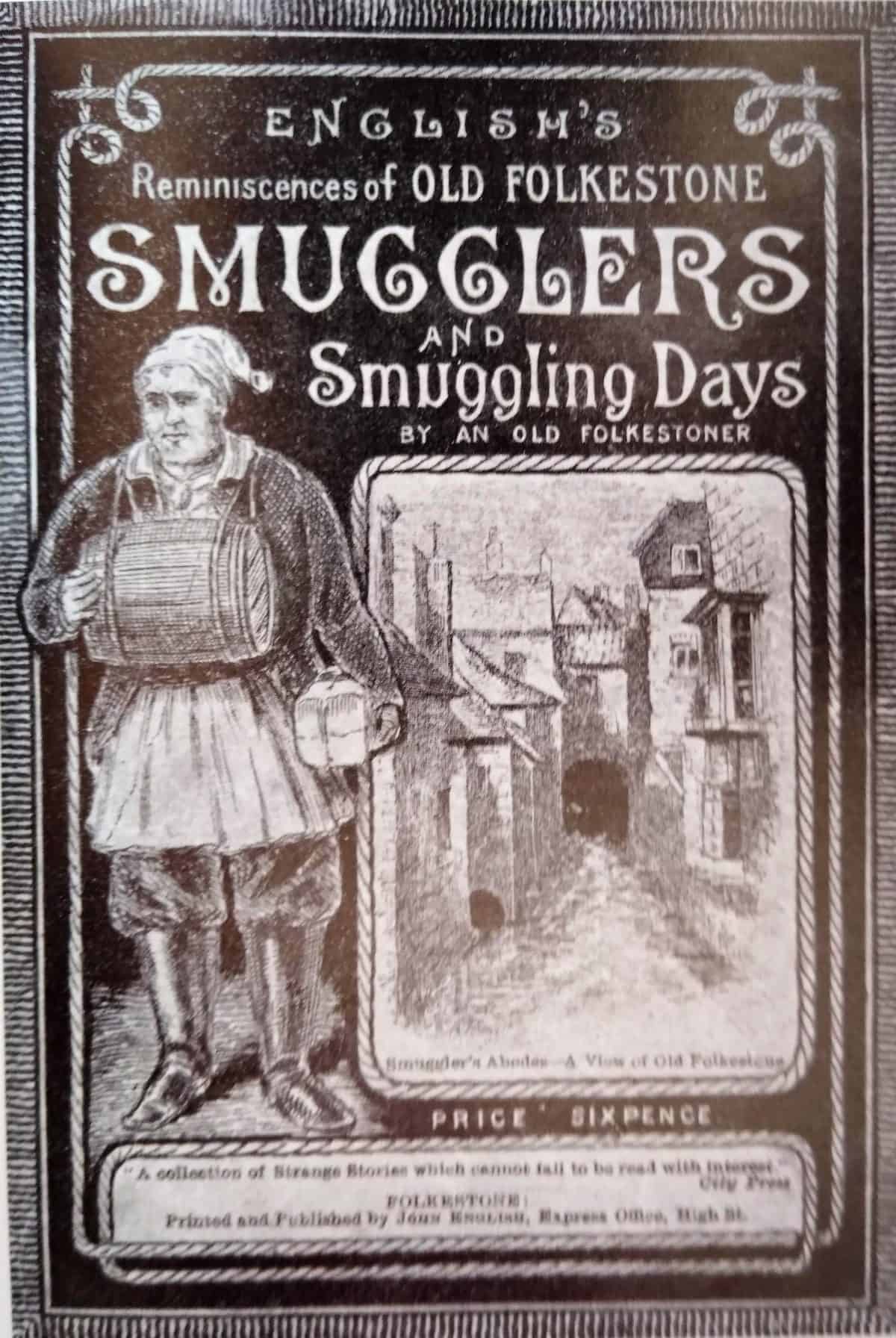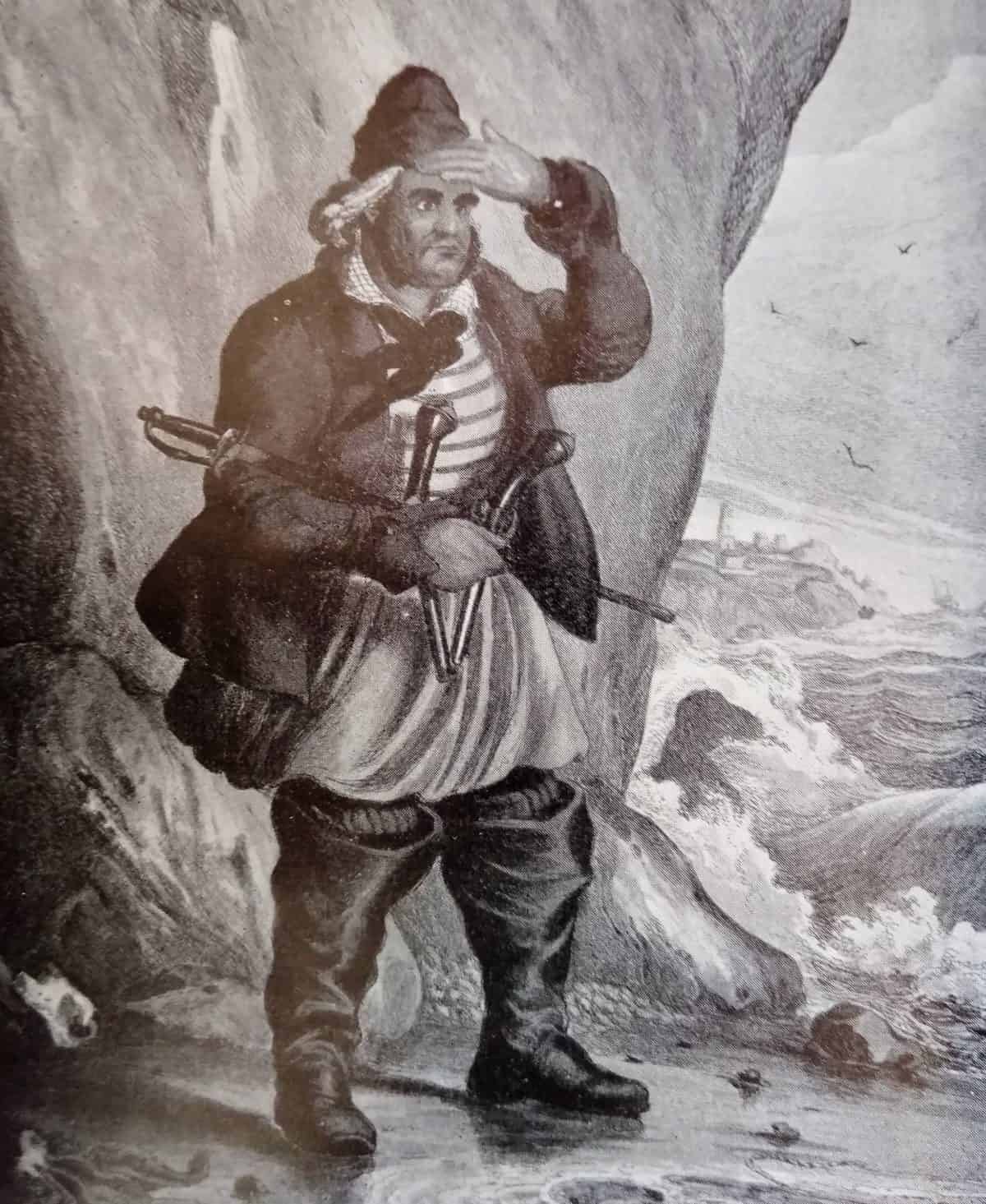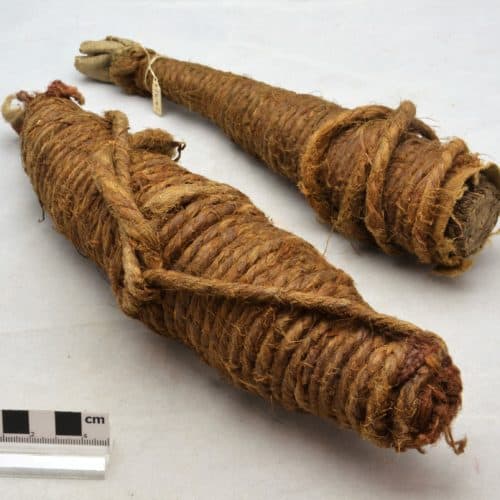Maritime 5: smuggling
In this old painting a large group of people are unloading barrels from small sailing boats that have been run onto the beach at a remote spot, well away from prying eyes.
The impression is they are smugglers, illegally importing contraband across the Channel from France, Contraband was smuggled goods such as barrels of brandy, tobacco and French lace that were brought in without paying taxes.
Smuggling was rife in Folkestone and the Romney Marsh in the 18th and early 19th centuries. It was organised by large well-armed gangs, such as the Hawkhurst Gang.
The barrels are being loaded onto horse-drawn carts. The two people beyond the sand dunes (far right) may be look outs - making sure ‘the coast is clear’ of armed revenue men, who would arrest them for this illegal activity.
Penalties for getting caught were severe. Execution or transportation to Australia were common punishments, designed to deter others.
The sky is dark, suggesting it may be night time, or a storm is approaching. Most smuggling took place under cover of darkness.
This is a hand-coloured engraving, based on a painting by famous 19th century artist Joseph Mallord William Turner, who sketched and painted many scenes in Kent.
In the foreground, smugglers are bringing barrels of brandy up from the beach. They appear to be burying some, presumably to hide them from the revenue men.
In the background is Folkestone, with its harbour and parish church, with the White Cliffs beyond.
The flat grassy area on the clifftop, between the town and the flock of sheep, was soon to be developed as The Leas.
By the time this engraving was published in 1825, smuggling was a fading memory, so this is a romanticised view, looking back to a former age.
This popular Victorian book recounted fascinating stories of the old Folkestone smugglers.
The front cover (on the left) features a smuggler carrying two tubs (small barrels of brandy) suspended over his shoulders with rope. They are perfectly balanced, with one at the front and the other at the back. This made them easy to carry.
The illustration (on the right) is from inside the book, and shows a smuggler gazing out to sea, to spot a ship approaching with contraband.
He is wearing big leather sea boots, a thick jacket and hat against cold, wind and rain, and is armed to the teeth with a brace of pistols and a sword, in case of a fight with the revenue men.
This is a tobacco twist, a big lump of tobacco hidden inside a twisted rope.
We don’t know much about this unusual artefact, but one suggestion is it’s smuggled contraband!
The rope could easily be hung from the rigging of a small smuggling boat – remaining ‘hidden in plain sight’ even if the boat was searched.
Fascinating fact
Smugglers came up with lots of ingenious ways to hide contraband. Ladies sometimes sewed smuggled lace into their petticoats, or hid tobacco in the hollow heel of a shoe!

